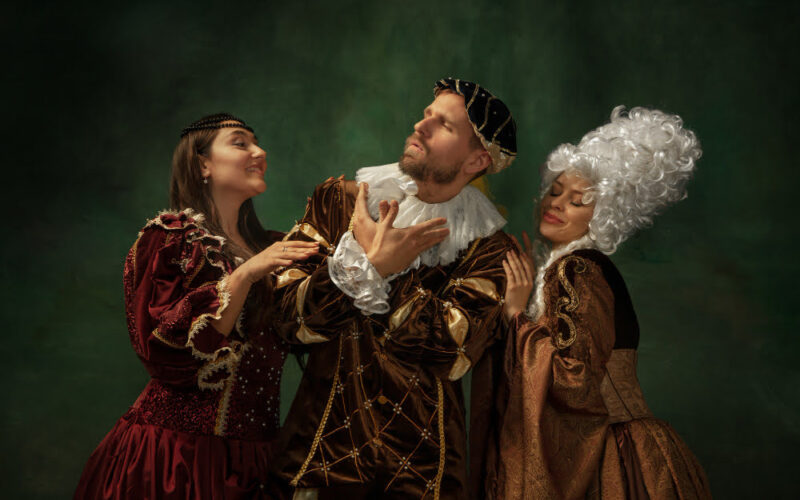The Renaissance was a period of great cultural and artistic flourishing that took place in Europe from the 14th to the 17th century. It was a time of exploration, scientific discoveries, and great artistic achievements. One of the most fascinating aspects of this period was the fashion. Renaissance fashion was characterized by its luxurious fabrics, intricate details, and elaborate designs. In this essay, we will explore the evolution of Renaissance fashion, its key characteristics, and its lasting influence.
During the early Renaissance, fashion was heavily influenced by the Gothic style of the previous era. This was characterized by long, flowing robes, and pointed headdresses for women, and tights, doublets, and hoods for men. However, as the Renaissance progressed, fashion became more sophisticated and refined. One of the most significant changes was the introduction of the codpiece, a triangular piece of fabric that covered the genital area of men’s clothing. This was seen as a symbol of virility and became a prominent feature of men’s fashion.
Another important aspect of Renaissance fashion was the use of luxurious fabrics such as silk, velvet, and brocade. These fabrics were often richly embellished with intricate embroidery, lace, and beading. Women’s dresses were typically long and flowing, with tight-fitting bodices and voluminous skirts. Sleeves were often wide and puffed, and the neckline was low and square. Headwear for women included bonnets, veils, and jeweled tiaras.
Men’s clothing during the Renaissance was equally elaborate, with doublets, hose, and short jackets being popular choices. Colors were often bright and bold, with red, green, and gold being popular choices. Hats were also an important accessory, with the beret, the cap, and the tricorne being common styles.
One of the most iconic items of Renaissance fashion was the corset. This was a tight-fitting undergarment that was worn by women to create a slim waist and accentuate the bust. Corsets were typically made of whalebone or steel and laced up at the back. They were often worn with a chemise or shift, which was a loose-fitting undergarment that provided a barrier between the corset and the skin.
Despite the opulence and extravagance of Renaissance fashion, it was also highly functional. Clothing was designed to be practical and comfortable and to allow the wearer to move freely. This was particularly important for women, who were often required to undertake strenuous activities such as dancing, horse riding, and hunting.
The influence of Renaissance fashion can still be seen today, with many modern designers drawing inspiration from this period. One example of this is the use of rich, luxurious fabrics such as velvet and brocade, which are often seen in high-end fashion collections. The corset has also made a comeback, with many designers incorporating this iconic garment into their designs.
In conclusion, Renaissance fashion was a reflection of the period’s artistic and cultural achievements. It was characterized by luxurious fabrics, intricate details, and elaborate designs. The use of bright, bold colors and the introduction of the codpiece were notable features of men’s fashion, while women’s clothing was defined by voluminous skirts, tight-fitting bodices, and the iconic corset. Renaissance fashion was not only opulent and extravagant but also highly functional, designed to allow the wearer to move freely and undertake strenuous activities. Its influence can still be seen today in modern fashion, making it a truly enduring legacy.
References
Ribeiro, A. (2010). Dress in eighteenth-century Europe, 1715-1789. Yale University Press.
Tortora, P. G., & Eubank, K. (2010). Survey of historic costume: a history of Western dress. Fairchild Books.
Arnold, J. (1999). Patterns of Fashion 4: The Cut and Construction of Linen Shirts, Smocks, Neckwear, Headwear and Accessories for Men and Women C. 1540-1660. Macmillan Publishers.
